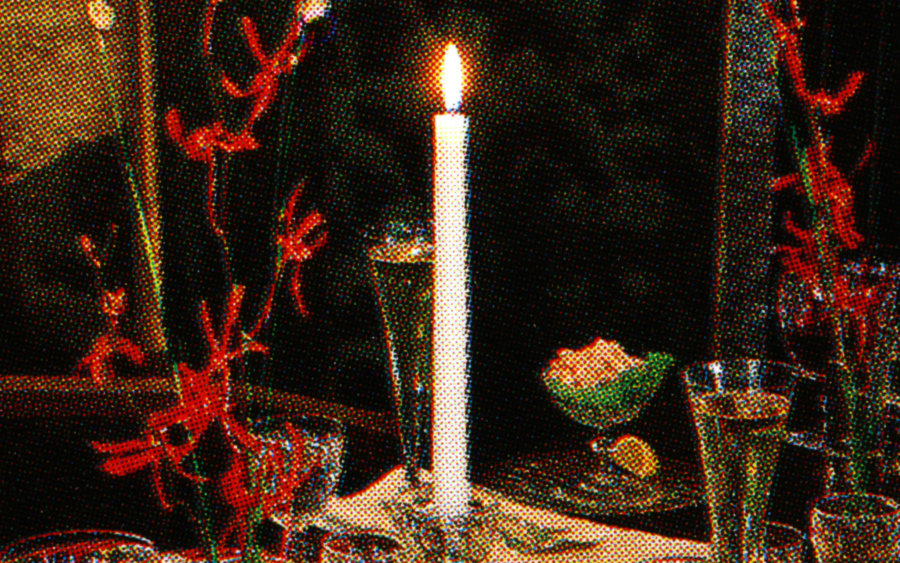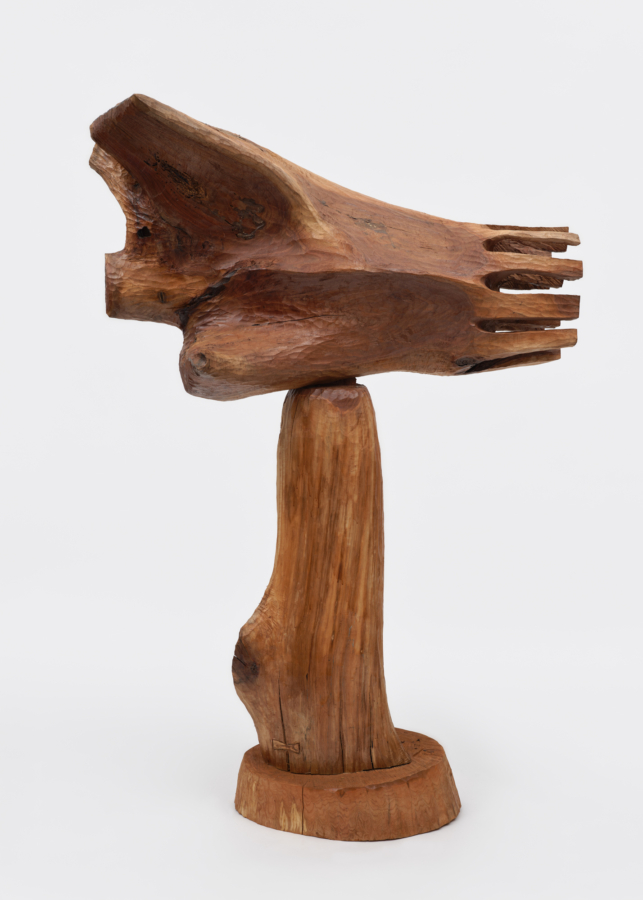September 17, 2020
Henni Alftan published by Karma, New York, 2020
Download as PDF
Henni Alftan is available here

We live in a noisy time, in which the loudest, most sensational, and most vulgar tend to seize the most attention. When it’s the shoutiest who get heard, all other voices are forced to become louder to compete. So it is that the decibels, literal and metaphorical, keep rising and we find ourselves in a clangorous, even deafening escalation of attention-seeking. It can feel like being in an over-crowded restaurant, where the diners are not just yelling, but trampling across tables as they do so. This is certainly true of politics; it might be true of art, too, where trolling too often proves a more successful strategy than wooing. Wherever it happens though, we suffer a kind of spiritual attrition and a blunting of sensibility: the world is coarsened.
How welcome, then, to be worked on in quiet ways, to be slowed down, and subtly reformed by a sensibility that speaks sotto voce rather than screams—not attention-seeking but, rather, attention-commanding. In an accelerated, manically distracted time, Henni Alftan’s work insists, gently but firmly, that you pause and pay attention. Spending time with her images—although taking time is the more appropriate, because more soulful, phrase—is to experience the lens to the world shifted a notch. That is to say, a minor adjustment has been made, but the change it has effected is inordinate, because now everything looks different. And what a relief it is to see it altered.
Alftan’s compositions are simple, and the objects they depict legible, even if these pieces of the recognizable material world have been made potent and subtly strange by their close-up framing: here is a hemline, here is a rain-flecked window, here are a pair of upended spectacles. So far, so certain. There is, however, a stealth radicalism at work here and it is two-pronged.
First, the paintings tend to be dynamized as much by what is not there, as by what is. Curtains, blinds, veils, and shadows abound, but there is often a sense that something significant is effaced, or just out of shot. “I see that there’s something I’m not seeing,” Alftan says. “Whether that’s because there’s a veil, or it’s out of the frame … it leads to a certain tension.” This allows the viewer the possibility, as Alftan hopes, of looking rather than seeing. The distinction is crucial. ‘Seeing’ is passive, but ‘looking’ is engaged, intentional, and even transformative. The effect is quieting but also disquieting. What happened “off-screen” to shatter the left lens of this man’s spectacles (Untitled, 2015)? Or, what concealed object is this hand reaching for as it slips into a purse (Handbag, 2015)? Or, why is this woman meeting her own gaze in the reflection of a knife, and what might she do with that knife next (Kitchen, 2016)? We see only her eyes in the blade, held flat against the palm of her hand, nothing else. The placing of her hands, the curious peace of those upturned palms, suggests some kind of decision has been made, or is about to be made. It’s the paucity of information that makes the painting thrum with unease.
In their composure, their poise, and the precision of their framing, Alftan’s images are often redolent of movie stills. We feel we are being given one isolated moment in a narrative, leaving us suspended in the tension of what happens next and what might be outside the frame. In one painting (Untitled, 2016), a woman’s features are obscured by the shadow of a profile of a man, his ponderous-looking jowls more than reminiscent of Alfred Hitchcock’s famous silhouette. One face, then, is obscured by the shadow of another, but neither she nor he are visible or identifiable. The line of the man’s profile in shadow traces an alternative, Picasso-ish set of sideways features down the face of the woman, and in this way an ostensibly representational image hints at and flirts with the abstract.
In the opening credits to his famous TV series from the 1950s and ’60s, Alfred Hitchcock Presents, the filmmaker would move, in silhouette, from the right edge of the screen to the center, meeting and eclipsing his own line-drawn caricature. The sequence has become iconic, a piece of our collective visual language, in large part because these few seconds are striking in their simplicity. They also, however, serve a greater symbolic purpose. What we’re seeing is a piece of reality in the form of Hitchock’s own moving shadow, encroaching on and occluding the depiction of that same reality—the gestural line drawing of his profile. This idea, of the border between the representational and the real, animates Alftan’s work. So many of her paintings perform the magic trick of being both figurative and abstract at the same time. This, then, is the second prong of stealth radicalism at work. As Alftan has said: “I try to make each piece a critical image of itself, the thing and the image at the same time.”1 Her methodology attests to this, too. “It’s kind of like making movies,” she says of her process, “because first I will do a list—the first phase is a script.” Second, she makes a very precise drawing, a blueprint of sorts, which determines the size and composition of the painting. This, she says, “is kind of like a storyboard.” Then, finally, “I go to the studio and do the actual painting.” In other words, the final painting (itself some kind of statement of a picture) begins as a literal description toward the painting.
In the same way that the works suggest themselves as pictures of painting, the paint—the substance of the image—sometimes refers both to itself and to something else. For Beauty (2014), for example, is a portrait of a woman with her eyes closed, basking as a greenish face mask dries across her skin. The striations of paint also serve, however, as the goop of the subject’s face mask across the bridge of her nose. In other words, impasto stands in as a beauty product. And so we have the frisson of that little dance between realism and artifice.
This dance is realized most resonantly, beautifully, in Figure in the Carpet (2014), a sonorous painting of a piece of fabric lying across a surface, draped in two steady, heavy runnels as it falls from the left edge of the table. In his lengthy short story of the same name—an endlessly analyzed piece of fiction about the futility of definitive artistic analysis—Henry James enacts his theme, winding the story through impossible exegesis as a writer struggles to deduce another writer’s “primal plan,” the key to his work, “something like a complex figure in a Persian carpet.”3 Unlike the story’s protagonist, Alftan is less concerned with some absolute meaning, and more concerned with the literal figure itself. Is the figure here, well, figurative or abstract? The patterns of the fabric are abstract shapes, but the image calls you to look closer and see the almost indiscernible warp and weft of the fabric, its soft fuzz, as well as the minor gradations of light, all rendered with supremely controlled and careful brushstrokes. The image, then, becomes realist, almost photographic in its eloquence: a painting of a pattern, rather than a pattern painting.

Henni Alftan, Untitled, 2016, oil on canvas, 21 5 ⁄8 × 18 1 ⁄8 inches (55 × 46 cm)
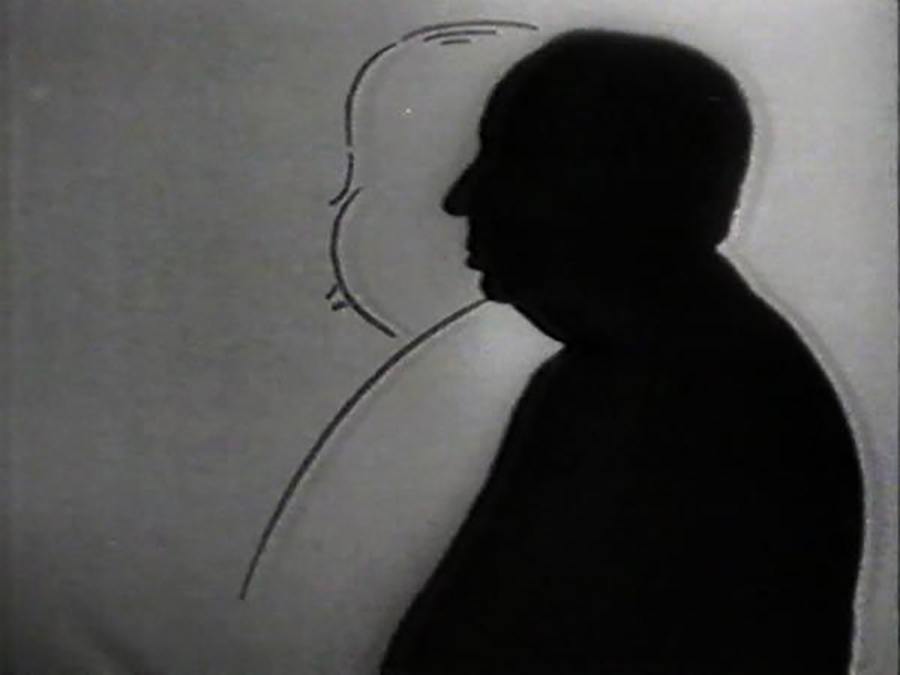
Title sequence from Alfred Hitchcock Presents, 1955–65
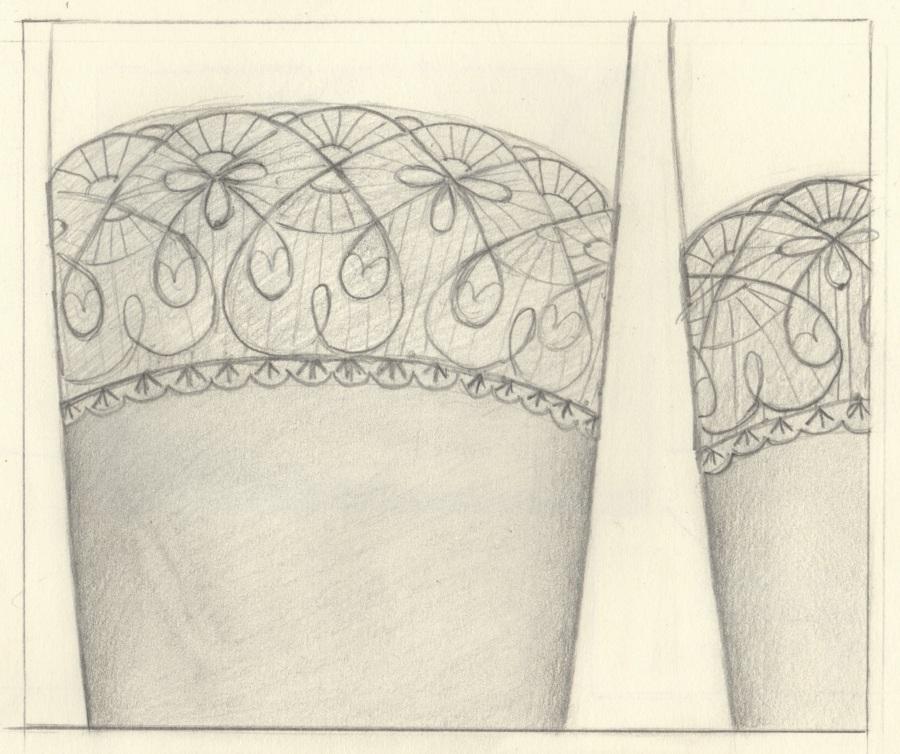
One of Henni Alftan’s “storyboards,” pencil on paper
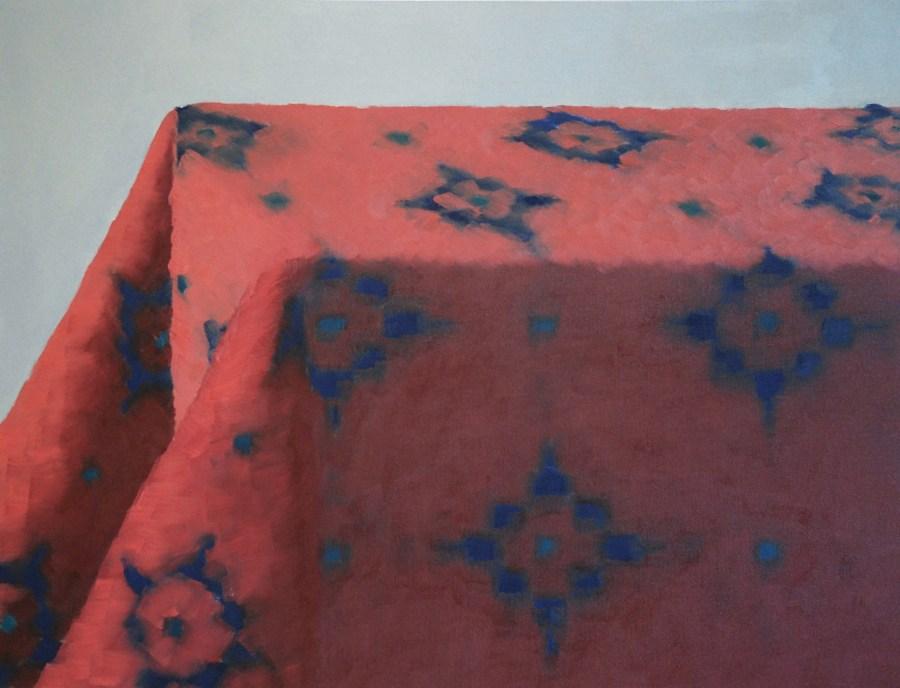
Henni Alftan, Figure in the Carpet, 2014, oil on canvas, 35 × 45 3 ⁄4 inches (89 × 116 cm)
Alftan, as she puts it, is “showing and naming at the same time,” which is why painting doesn’t feel quite the right word for these works, even if, yes, they are of course oils on canvas, adhering in the strict sense to the category. She claims to paint pictures rather than paintings. One way in which the sense of “picture” is preserved is through the stillness that inheres in her works. (“The presence of the object doesn’t work,” Alftan explains, “if there is a huge amount of movement, because it becomes a painting more than a picture.”) A “painting”suggests life at large—all that’s moving and uncontainable and ongoing. A picture, however, at least in the Alftan sense of the term, is self-contained, paused—it is a caesura, carefully constructed and framed. This quality of pause is deftly ironized in Non-Stop (2020), in which an eponymous neon sign is truncated by the sides of the frame so that both the first “N” and the final “P” are obscured. The roof of a car, apparently stationary, sits in the foreground, obliterating the rest of the signage: “non-stop” has been stopped.
The quality of “picture” rather than “painting” is also preserved through the artist’s refusal to depict a full face—even the woman in For Beauty is masked, in a sense. Instead, we have only glimpses of people. Often, there’s something provocative to this, a fetishizing lens, particularly in those works in which we become voyeurs of the voyeur (Peeping Tom, 2012; Voyeur, 2017), seeing only a sliver of the watcher’s face. But these elegant evasions can also conjure something beguiling and benign. There is, for example, a quiet wryness to Face to Face (Déjà-vu) (2020), in which the subjects are indeed face to face, but only to each other—the women are positioned so that their faces can’t be seen by the viewer.
In a recent essay on the TV series Watchmen, the critic Namwali Serpell considered the show’s “match cut”: a disjunctive technique intended to evoke the comic book panels of the original graphic novel. Rather than flowing from one shot to the next, the match cut lasts long enough for the viewer to notice that two shots in different settings have some sort of consonance of composition. And so, as Serpell says, “we make the leap to connect them, to relate two things separated by space, time, perspective.” She also writes: “You could think of a match cut as a visual analogy or metaphor: a purposive claim that one thing is like another thing, a ‘perception of the similarity in the dissimilar,’ as Aristotle put it.”3 It’s this small and significant jolt of difference—the tension between the familiar and the peculiar—that energizes Alftan’s recent Déjà-vu series. In these pairs of paintings, some small change has occurred between one and the next; the two images are animated by their dissimilarity.
All that is left unsaid sounds out, like a very soft minor chord, through these works. In Disappeared (Déjà-vu) (2018), for example, the first iteration depicts a pair of spectacles resting on a surface against a backdrop of curtains (home, we presume), as if their wearer has just removed them after a long day—the mood is domestic and quotidian. In the second, however, those same spectacles lie, in the same position, against a backdrop of desert. Uh-oh. Where is their owner and what has happened? Likewise, in Ajar (Déjà-vu) (2019), we encounter the same door pushed a little wider from the first to the second image. That’s all—a matter of a few inches, casting more light into the room—but this small change is inordinately unsettling; the mood becomes apprehensive, even noirish, casting back a sense of dread to the first, seemingly innocuous image.
Unlike a TV match cut, however, Alftan asks that the pairs of paintings not be seen side by side. As she explains:
I always thought of my paintings as not just a pictorial plane, but as an object in a specific space in a specific context, and I realized that no matter how much I talked about it people didn’t really consider that. The problem with a painting is that people think you can put it in a frame, hang it wherever, whereas I like to think of them as any other contemporary art object: you’re not supposed to add something to it, it’s not neutral to its environment, it’s not something you hang on the wall and what’s around it doesn’t influence the context. So I figured if I have these two paintings that are linked, conceptually and visually, but they’re not in the same space, then that separates them—you’re obliged to take it into context.
In one sense, our entire image-glutted world puts us in a permanent state of “déjà vu.” As in, it can seem as though everything has already been seen, copied, reproduced, screenshotted, memed, Instagrammed. How, then, in a visually exhausted world, to make the “already seen” register more like the “never seen”? That, perhaps, is the artist’s ultimate job description—the great and difficult endeavor they’re called on to undertake. Alftan answers that call by making the familiar peculiar; we’re compelled to stop seeing and start looking.

